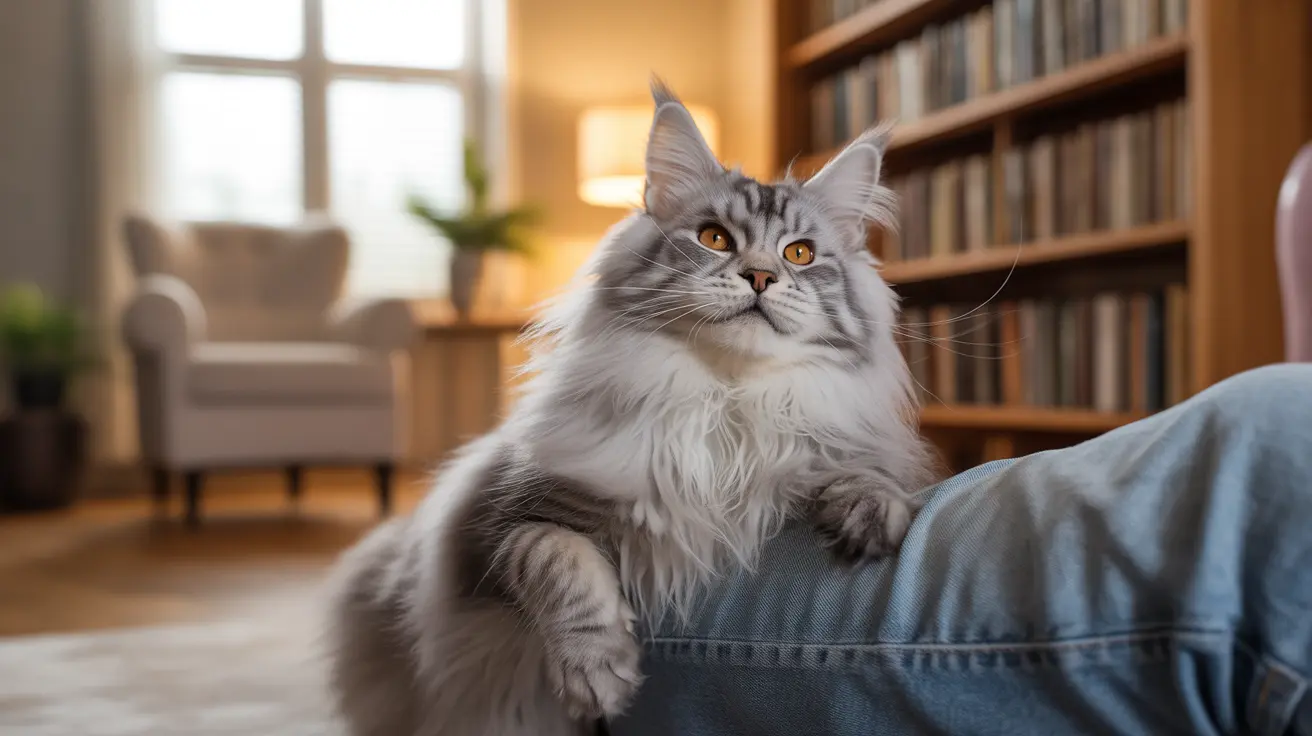Cat nuzzling is one of the most endearing behaviors our feline friends display. When your cat gently presses their head against you or rubs their face on your leg, they're engaging in a complex form of communication that goes far beyond simple affection. Let's explore what this behavior means and why it's so important in the feline world.
This intimate gesture, sometimes called "bunting" or "headbutting," serves multiple purposes in cat communication and social bonding. From marking territory to expressing trust and love, cat nuzzling is a fascinating window into your pet's emotional world and social needs.
The Science Behind Cat Nuzzling
When cats nuzzle, they're actually doing more than just showing affection. They're using specialized scent glands located on their faces, particularly around their cheeks, chin, and forehead. These glands release pheromones – chemical signals that are invisible to humans but carry important messages to other cats.
These pheromones serve as a form of olfactory communication, marking territory and creating a sense of familiarity in their environment. When your cat nuzzles against you, they're essentially marking you as part of their trusted circle.
Social Bonding Through Nuzzling
In the wild, cats use nuzzling as a way to strengthen social bonds within their colony. Domestic cats have carried this behavior into their relationships with humans and other pets. When your cat nuzzles you, they're treating you as part of their family group.
This behavior often occurs alongside other signs of affection, such as purring, kneading, or gentle meowing. It's particularly common during greeting rituals, such as when you return home after being away.
The Role of Nuzzling in Territory Marking
While nuzzling might seem purely affectionate, it also serves a territorial purpose. Cats use this behavior to claim their space and the important objects – and people – within it. By leaving their scent through nuzzling, they're creating a map of their territory that other cats can detect.
This territorial marking isn't aggressive; rather, it's a way for cats to create a comfortable, familiar environment where they feel secure. The more a cat nuzzles something, the stronger their connection to it becomes.
Understanding Your Cat's Body Language
When your cat nuzzles, pay attention to their overall body language. A relaxed cat will display soft eyes, forward-pointing whiskers, and a gently raised tail. These signs indicate that the nuzzling is indeed an expression of affection and comfort.
However, if your cat seems tense or their tail is twitching, they might be seeking attention for a specific need, such as food or play. Learning to read these subtle cues can help you better understand and respond to your cat's needs.
Frequently Asked Questions
Why does my cat nuzzle or headbutt me?
Your cat nuzzles you to show affection, mark you as part of their family group, and create a shared scent profile. This behavior indicates trust and social bonding.
What does it mean when a cat rubs its face against objects or people?
When cats rub their faces against things, they're releasing pheromones from their facial glands, effectively marking these items or people as familiar and safe parts of their territory.
How does cat nuzzling relate to scent marking and territory?
Nuzzling is directly connected to territorial marking through the release of pheromones. Cats use this behavior to create a comfortable environment filled with their own familiar scent.
Can cat nuzzling be a way for my cat to ask for attention?
Yes, cats often use nuzzling as a way to seek attention, especially if they've learned that this behavior successfully gets a response from their human companions.
What body language usually accompanies affectionate cat nuzzling?
Affectionate nuzzling is typically accompanied by relaxed body posture, soft eyes, forward-pointing whiskers, gentle purring, and a loosely held tail with a slight curve at the tip.
Conclusion
Cat nuzzling is a beautiful example of how our feline companions communicate their trust, affection, and territorial needs. Understanding this behavior helps us better appreciate and respond to our cats' social and emotional requirements, strengthening the unique bond between humans and their feline friends.






